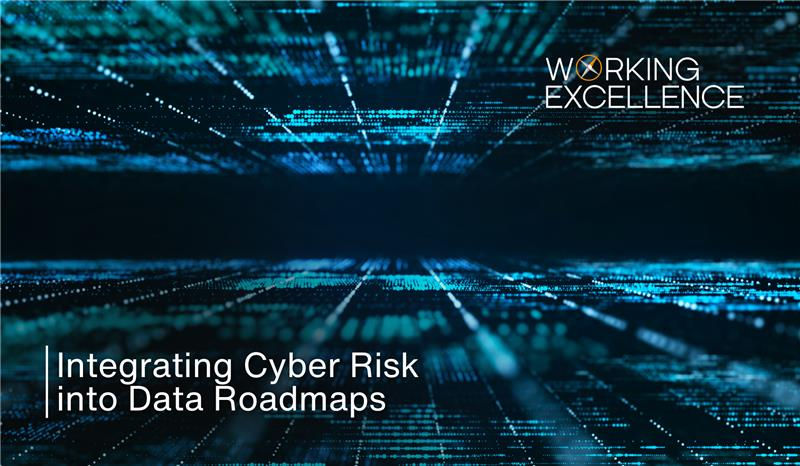Secure Data Strategy: Integrating Cyber Risk into Data Roadmaps
- Kurt Smith

- Oct 1
- 4 min read
Enterprises today are sitting on enormous volumes of data, but few have the structures in place to keep that data both usable and secure. Leaders often focus heavily on innovation and modernization without fully considering the risks that emerge when sensitive information is spread across multiple platforms, vendors, and departments. A secure data strategy is the answer to balancing agility with protection, ensuring that organizations can scale confidently while minimizing exposure.
The Stakes of Insecure Data
When data practices are fragmented, organizations face multiple challenges that go beyond technology:
Compliance pressure: Regulations across industries demand stronger governance and penalties for violations are rising.
Operational inefficiency: Redundant storage and poor data quality make systems expensive to maintain and difficult to use.
Security vulnerabilities: Cyberattacks continue to target businesses that rely on outdated or reactive protections.
Missed opportunity: Without trusted data, AI and advanced analytics cannot be adopted effectively.
Treating security as an afterthought makes the entire ecosystem fragile. The most successful enterprises recognize that security and scalability must be designed together.
From Roadmaps to Resilience
Working Excellence has helped organizations move from reactive practices to holistic ecosystems that drive growth while meeting compliance. By assessing current capabilities and identifying gaps, our team develops data roadmaps that are directly aligned with business growth and innovation priorities. These roadmaps are not static—they are built to evolve as technologies and threats change.
Core elements include:
Cloud platform assessments: Evaluating AWS, Azure, and GCP for compliance, cost, and scalability.
Architecture design: Creating secure, hybrid, and multi-cloud environments that are AI/ML-ready.
Modernization: Migrating legacy systems with minimal disruption while embedding governance.
Governance integration: Establishing audit-ready environments that build trust across the organization.
This comprehensive approach ensures that resilience is engineered into every layer of the data strategy.
Cyber Risk as a Design Principle
A common mistake in enterprise planning is to address risk only after systems are already in motion. By integrating cyber risk into the earliest stages of a data roadmap, businesses create systems that are prepared to withstand both known and emerging threats. This proactive approach includes:
Security controls embedded within architecture rather than added later
Cloud-agnostic recommendations that reduce reliance on a single vendor
Continuous monitoring and quality frameworks for reliable, trusted data
Scalable environments that remain compliant even as workloads grow
Traditional vs. Secure Data Strategy
Dimension | Traditional Method | Secure Data Strategy |
Security Integration | Applied after system design | Built directly into architecture |
Compliance | Addressed during audits | Embedded continuously from day one |
Cloud Approach | Vendor-driven | Cloud-agnostic and hybrid-capable |
Modernization | Simple lift-and-shift | Governance-driven, AI-ready stacks |
Business Value | IT-centered outcomes | Growth, agility, and innovation |
Governance as Growth Enabler
Strong governance is often misunderstood as an obstacle to innovation. In practice, it is the foundation that allows innovation to thrive. Working Excellence embeds governance and stewardship programs from the outset, ensuring that data is trusted and policies are enforceable. This enables:
Reliable analytics and reporting
Secure adoption of emerging technologies
Transparent alignment across executives and stakeholders
By transforming governance into a value-creating asset, enterprises gain confidence that their data environments are not only compliant but also built for scale.
Why Organizations Choose Working Excellence
Clients partner with Working Excellence because we balance innovation with risk management. Our cloud-agnostic stance guarantees that every recommendation aligns with business goals rather than vendor incentives. This practical, outcome-driven approach allows enterprises to:
Accelerate modernization timelines without compromising security
Build scalable architectures that adapt as technology evolves
Reduce compliance risks through policy-driven environments
Unlock AI, machine learning, and analytics capabilities with confidence
With this model, data shifts from being a siloed challenge to becoming a driver of resilience, agility, and competitive advantage.
Moving Forward with Confidence
Every delay in building a secure data strategy increases exposure to risk. The threats are not slowing down, and regulatory demands are only intensifying. Enterprises that act decisively now will gain a foundation for innovation while ensuring protection against future challenges.
👉 Start designing a secure, scalable, and resilient data roadmap today. Connect with Working Excellence to protect your data and accelerate growth.
Frequently Asked Questions
What is a secure data strategy?
A secure data strategy is a framework that integrates cybersecurity, compliance, and governance into every stage of data management. It ensures that sensitive information is protected while supporting business growth, analytics, and innovation.
Why is it important to integrate cyber risk into data roadmaps?
Cyber risk must be considered during planning and design to prevent vulnerabilities. By embedding controls early, organizations reduce the chance of breaches, avoid costly compliance issues, and create scalable environments prepared for future threats.
How does governance improve data security?
Governance ensures that policies, roles, and processes are defined and enforced across the enterprise. Strong governance reduces compliance risks, improves data quality, and creates trust so businesses can confidently adopt new technologies like AI and machine learning.
What role does cloud strategy play in securing data?
Cloud strategy directly impacts security and resilience. A cloud-agnostic and hybrid approach allows enterprises to avoid vendor lock-in, increase flexibility, and deploy consistent security and compliance controls across platforms.
How can Working Excellence help with secure data strategies?
Working Excellence provides assessments, modernization roadmaps, architecture design, and governance integration. By balancing innovation with risk management, we help organizations build secure, scalable, and AI-ready environments aligned with long-term business goals.




